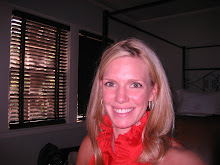 Multiplication: Can You Show It?
Multiplication: Can You Show It? This is multiplication lesson that helps reinforce the concept of multiplication by using pictoral models of multiplication problems. The students should be familiar with multiplication facts and should have some use with KidPix or Pixie. The teacher starts the lesson by reading a picture book about multiplication. The teacher then creates pictures of multiplication problems. For example, Craig had 3 friends over to play and gave each of them 3 trading cards. How many trading cards did Craig give away. The teacher would draw a model of what this would look like. The children then create their own multiplication pictures using Kidpix or some other drawing software. The students make at least 2 pictures each and the pictures are compiled together (by the teacher) to make a class multiplication movie.
This is something I plan on trying with my students. I have done a similar lesson with my students drawing their pictures on paper. I think they will enjoy doing in on the computer!
In this lesson, students read and perfor the play, Red Writing Hood, to see how a character's attempts to solve problems creatively can lead to humorous and unexpected consequences. The lesson will take approximately 7 days. After discussing and reading folktales, fables, and nursery rhymes the students will talk about the problems and solutions in these stories. Students point out the difference in this book is that Little Red Writing Hood is a play. The teacher then assigns parts and students spend the next few days practicing the play. On day 7 the play is performed in front of an audience and video taped.
I think this lesson has some potential, but as it is written it is a little weak. I think lots of technology could be incorpated in this lesson. I would have my students create their own fairytale. They could make story webs using Kidspiration to design the plot. They could also draw scenes using animation. They could either perform their play or it could be displayed on movie maker.
In this lesson, students find real life examples of different geometric shapes, angles, and lines. This lessons reinforces that we don't just see these things in our math book, but we see these things everywhere. Students will use digital camers and will work in groups to find different geometric things. After compiling pictures, groups will work in power point to create a slide show of the different things their group found.
I have done a digital scavenger hunt with my kids, but I like the idea of creating a power point presentation. I think the students will enjoy showing their work to the class. I plan to use this lesson.
Images from:




No comments:
Post a Comment